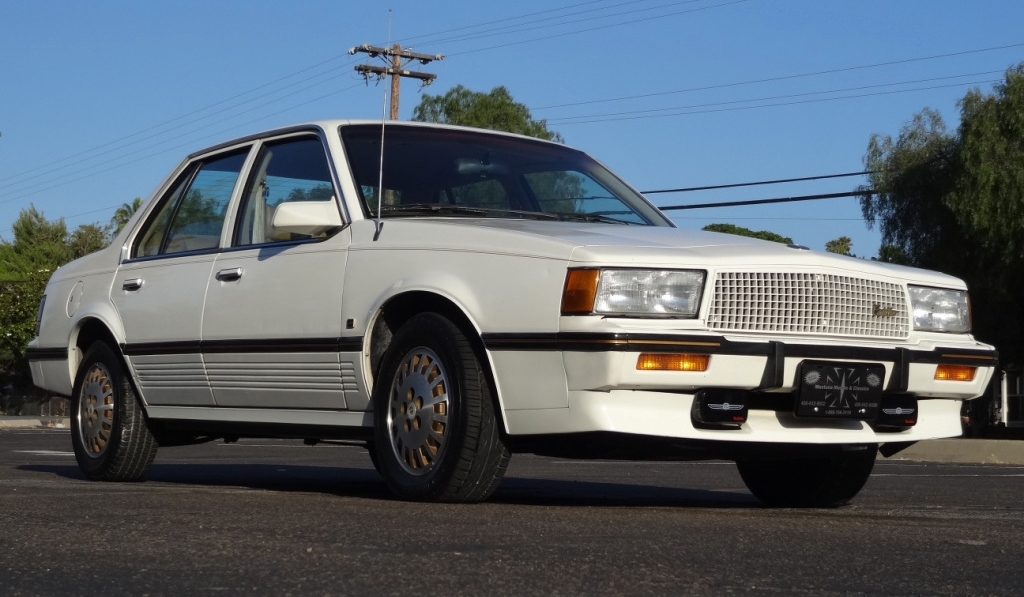
Note: Today’s guest post was written by a mystery contributor! Enjoy. -TK
We all know the story of the Cadillac Cimarron, a badge engineered J-body created to be an entry level offering from Cadillac in the early 1980’s. Many “enthusiasts” (who lease homely imports like CR-Vs with absolutely no sense of irony) like to beat up on the Cimarron and make an example of it for their own amusement and inflate their tiny egos. They wax poetically about how crappy they were, how they were the turning point in history and the reason why Cadillac fell from grace, and how it was the beginning of the end for General Motors, who they feel deserved to die. Heck, some self-proclaimed journalists even call it a Sin of some sort (as he or she may or may not drive to Dollar Tree for ramen noodles).
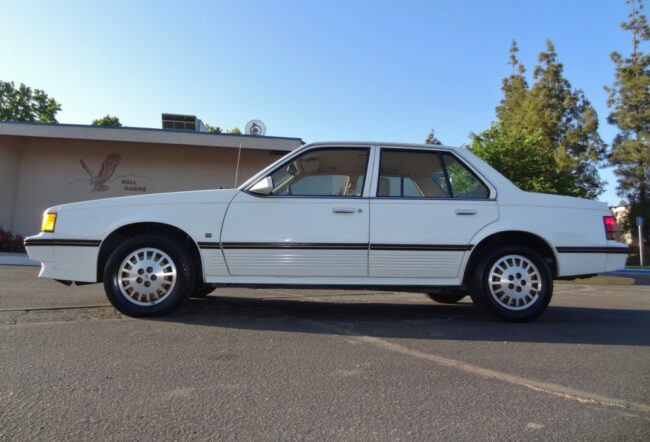
What these same “enthusiasts” (did you catch the quotation marks?) like to gloss over is that Cadillac was hardly the first or last company to tart up an economy car to call their own. Not even a year after the Cimarron was discontinued Toyota’s newly created Lexus luxury division was guilty of tarting up a badge engineered Camry and charging a $5,000 premium (about $11,000 in today’s money) for what is ultimately a less capable version of the same car.
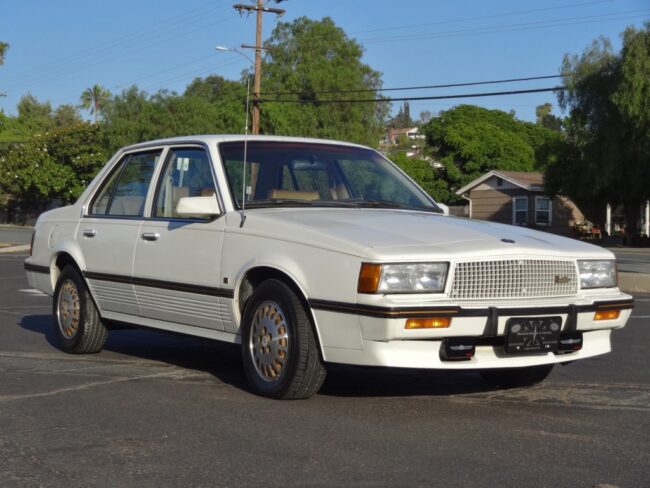
For your money you got two less driving wheels (The contemporary Camry was available with AWD), some leather, a few strips of wood, and maybe some slightly higher quality plastics (not according to Jack Baruth’s review https://www.thetruthaboutcars.com/2010/06/capsule-review-1990-lexus-es250/). All in a thinly disguised attempt at keeping the dealership network happy by giving them two products instead of just one.

What some fail to realize is that foreign automakers have a leg up on the big 3 when it comes to their tricks at badge engineering. I know there are people screaming at the computer right now saying “BUT BUT BUT CAPTIVE IMPORTS!!!” You have a point, but not for this discussion. Since most foreign automakers have products that they don’t sell in the United States they have more options to pick from when playing the badge engineering game.
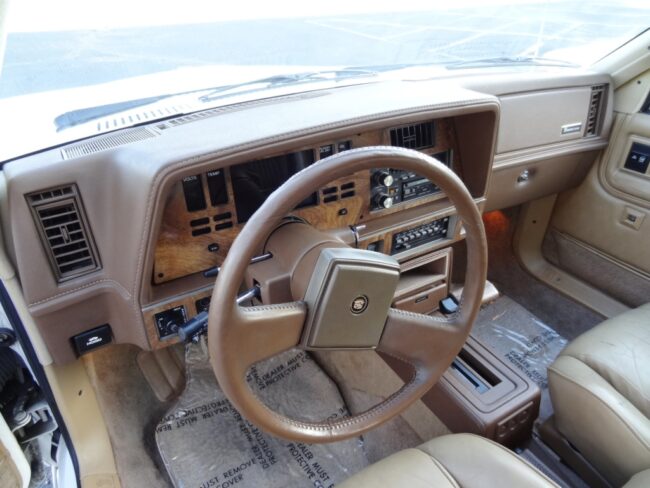
Sure, they have to make it EPA and safety compliant, but they have the luxury of being able to introduce something that doesn’t have a counterpart already on sale in the market, unlike the Cimarron which had similar offering in each division of General Motors at the time save GMC. There was even a Holden version in Australia.
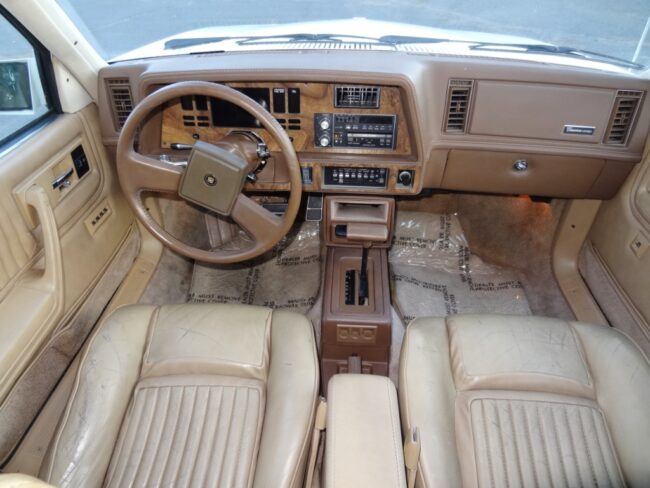
What some also don’t realize is that it seems like none of the foreign or other domestic automakers learned a thing from the Cimarron predicament. Toyota had the ES250 and the entire Scion brand (arguably an epic failure to everyone except one aging hippy who bought one and painted the wheels red). Nissan had the Infiniti G20 and M30, Honda had the TSX (an Accord in other markets).
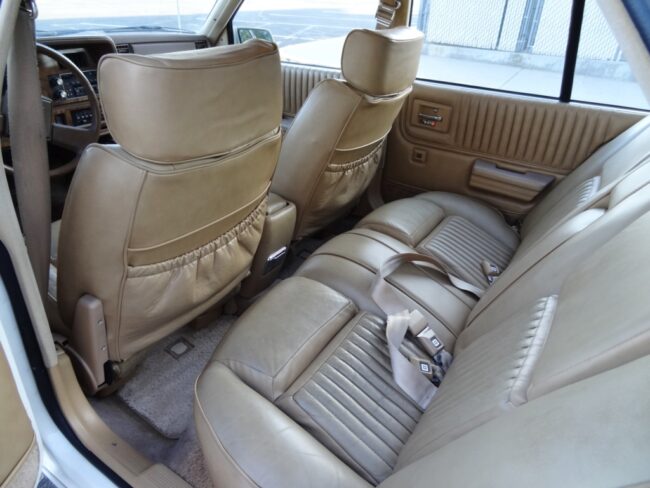
The Germans have been slightly more intelligent about it, Mercedes and BMW didn’t bring over anything like the A-class but did bring the strange and unsuccessful C-Coupe while BMW offered a strange and unsuccessful 318 ti. The British, under Ford ownership at the time, tried to pass off the Jag X-Type as not being a Ford with lipstick, something Ford should have known better than to do after their unsuccessful Merkur experiment. Chrysler Corporation should be an article all their own since they probably had the most badge engineered inventory from the US and overseas of any company, ever. Will anyone forget, or should I say does anyone remember, the Sterling, the only company that managed to ruin a Honda product.
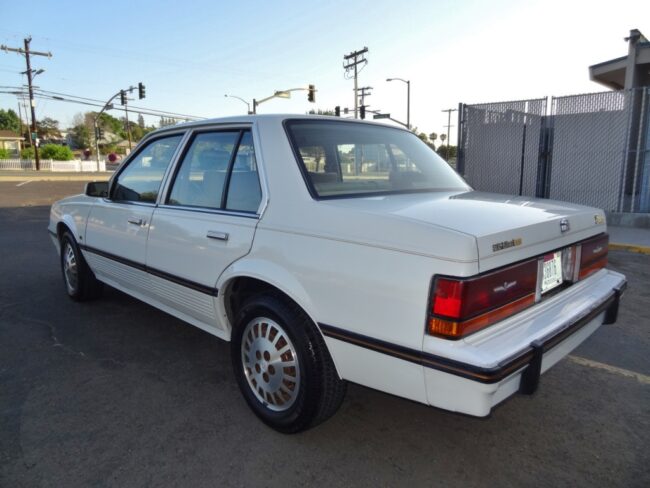
That was then, and this is now. Small economy cars loaded up with features and passed off as premium is a regular thing now. Lexus sells small CUV’s that would have been laughed at in 1989. Audi sells a “premium” sedan based on a VW Golf for upwards of $40 large and no one blinks an eye. Mercedes and BMW are selling FWD cars with vinyl seats and only the enthusiasts are complaining.
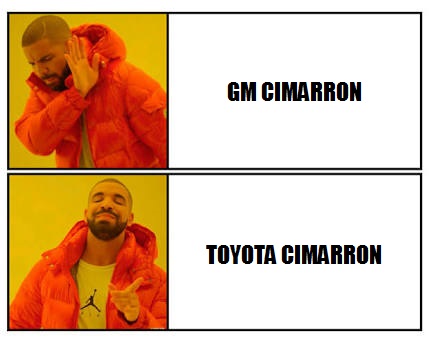
The mid 50’s divorced Real Estate agents are happy to lease them to get something different from the lease special 3 series they are turning in. Instead of poo pooing the Cimarron from the armchair (show me on this doll where the car that’s been out of production for 33 years hurt you), let’s look back and see that it defined a segment that didn’t catch on for almost 40 years. Could Cadillac have done better or different? Sure. Would it have mattered at the time? Probably not.
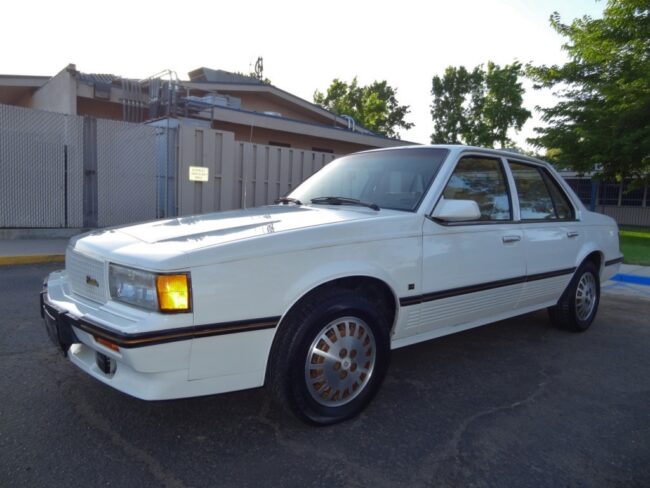







47 Comments
At last: a rational retrospective of the beleaguered Cimmaron!
It’s another Festivus miracle.
I’m at that point where I can afford any car that I want.
And I’m not seeing anything that I want.
Which is kinda sad.
Ain’t that the truth. I’m almost thinking that a subtle restomod of a 1960’s classic is the only way to get everything I want. Equip it with a modern suspension, a bulletproof engine and components, and it would be the last car I would ever need.
Tom makes good points about the ES250, which has been recently reintroduced! sans wood or hardtop roofline, the Golf A3/Q3, and the Clubman 2 series Gran Coupe’. The point to these “enthusiasts” is that Lexus, Audi, and BMW now also like GM deserve to die as Tesla and Hyundai are all that matter. This deserve to die for cars not to their taste show that their taste was really always their politics.
I didnt write this, a friend of mine did.
Tom, does your ‘friend’ happen to go by the handle of ‘John C’ on this site?
Him? I don’t think so, Tim…
There would have been more typos and run on sentences.
Like this.
Brute honesty is to be honored.
Hat tip…
Tom, your colleague makes a some good points, 30-40 years ago badge engineering was the way to go. The only thing I would add is Cadillac did what they do a lot of times, by the last model year of the Cimarron by Cadllac (an important point) was GM almost got it right and made it as different as they could from the other J platform cars. Like the Allante by 1993 they put a more powerful Northstar engine and quit building it. Just like the XLR (a Corvette in a tux) by 2009 it was a great car (I know don’t mention that they designed the tail lights as a single unrepairable unit and now if they stops functioning they can go for up to $5,000 for set of working used ones on the interbay). And we will not even discuss that in the final years the Wide Track cars from Pontiac were rebadged Holdens (which was not a bad thing, but they were not Pontiacs in the linage of Bonniville, Grand Ville, Firebird, Tempest)….
My grandmother always owned Cadillacs. She had a red 1977 Coupe De Ville with a white top when I was just a few years old. It was wrapped around a replacement transmission sourced with the wrong speedometer gears. My grandfather likely won the transmission in a poker game or as a favor from someone who owed him money. It’s hard to say exactly why my grandmother never knew how fast she was going in that impossibly large lipstick red boat. The car was cavernous to a 6 year old and somehow seemed like the coolest thing on wheels. Maybe it was the turn signal indicators out on the front fenders, possibly the classy white top, or all in the mind of a very young man who already loved cars.
The cruise liner was eventually replaced with a new 1984 Cimarron. It was blue with a blue interior. It was tiny but strangely plush. The quilting and wood-tone trim was reminiscent of the two tone luxery liner, condensed to child sized proportions. I still remember the machined facing of the aluminum wheels and the way that machined surface gave way to the cast in openings that allowed you to see the brakes. I’m unsure why this stands out in my mind 30+ years later, but I still remember the cool weirdness of those wheels. They looked so bulky and yet strong…while being made of aluminum instead of steel with wire wheel covers. The Cimarron possessed the first console mounted shifter that I ever saw. It seemed so cool and sporty compared to a typical column shifter.
My grandmother always complained about the amount of time it seemed to spend in the shop. At one point it was there because the carpet was constantly wet after it rained. The dealer found a cracked chassis weld and fixed it stating “I don’t think this little old lady has been out racing this car, so it must be a defect”. Something always seemed to be wrong with it, and yet she still loved driving it.
My grandmother often played a cassette tape by Anne Murray while we were driving in that Cimarron. To this day her song Daydream Believer transports me to the back seat of that plush blue interior. Some might say that I’m lucky that it’s not played on the radio much these days. Those same people are missing the point. The Cimarron was one of the greatest forgettable cars of our lifetime. And my grandmothers love/hate relationship with it seems to sum up the paradox of the biggest little Cadillac to roam the streets of 1984.
Any hint about the author?
If I were to hazard a guess, it would be “the aging hippie who painted his wheels red.”
That is the kind of self-deprecating remark that the aging hippie might try, to disarm the reader and throw him off, also.
To the car: It’s a nicely-preserved slice of a very dark period in American automotive history. A time when they pushed “Do it on the cheap” past its limits.
I get platform sharing. Sometimes even it shows through…the 1959-60 GM B bodies were remarkably similar across brand lines. For some reason, Harley Earl was really in a hurry to get those batwing monsters on the road before he (was, probably, involuntarily) retired. So the Buick rendition of the B body was used across.
It was acceptable, insofar as the shared dimensions, doors, windshields, etc. But the divisional engines and transmissions, and interior fixtures, remained. You could have a Chevrolet six or a Cadillac V8 in one; with a column-shift three speed or a state-of-the-art Turbo-Hydra-Matic with your Cadillac crest.
This thing…is just a Cavalier with leather fixtures and glued-on Cadillac badges. Engine is the same. Grille/headlights, almost. Rear quarter, the same, except for minor differences in light fixtures. What is the buyer getting? He’d have done better taking a year-old Cavalier to an auto customizer.
The Lexus/Toyota equation I don’t understand, partly because I never sat in a Lexus. But a Camry, most years, has been a solid automotive value. If the engine is the same, but the badge different…only the price differentiation can say whether it’s a bad thing.
I never saw the Scion as a ripoff, either…just an irrational distraction. Those cars could easily have been Toyotas, and the corporate disorganization and redundancy of brands, eliminated to save money. But, that was their choice…the wrong choice, as it turned out.
Making a marketing mistake, is, IMHO, a little different than trying to gull the buyer with badge engineering. If Cadillac couldn’t make the profits or get the green light to make their own small-car platform, they should have let it go. And if corporate forced it on them…well, eventually, such high-handed lowbrow stunts would be paid for.
Good comment – I would say the Cimarron is different from the other examples listed because it really was a half-assed effort as were the other “real” Cadillacs and most GM products of that time. Yes the ES250 was nothing but a fancy Camry, but the Camry was a class-leading car in its segment, and the LS400 it shared a showroom with was leading the whole German auto-industry to up their game because of its excellence and value. In comparison, the “top-of-the-line” Cadillacs in 1982 came with the weak-kneed HT4100 that soon developed a reputation for blown head-gaskets, not to mention all the fake wood, fake chrome, fake wire wheels, and fake landau tops that the Germans and Japanese laughed at. In other words, you can get away with badge engineering if the shared car is excellent, and your brand has some other offerings that are more unique and also excellent. It also helps if every car you make isn’t half-assed whose flaws aren’t fixed until 5 or 10 later just before the brilliant leadership drops the model (see Cimarron, Fiero, HT4100, Northstar, Olds Diesel, Vega, X-body, Quad 4, etc.).
I enjoyed how JPT deflected the obvious ES250 that the import humpers thought was fine by announcing he hadn’t sat in it, and the same Camry to judge. To that I will add that though I have spent wheel time in era Cavaliers, I have not even sat in a Cimarron but that does not mean I can’t imagine what the V-6, unavailable in any other J 4 door in those years, the better seats, and more sound insolation would do for a J. In addition, the prospect of joining the club of gentleman where maybe your father and grandfather were earlier by perhaps a decade earlier due to the lower price point will perhaps not be obvious to the VW bus/ Xbox crowd, but makes much sense to me.
I also enjoyed the idea that PN wrote this. Had he tried, would he have choked by the second line or just the first time he had to write the word Cimarron without the atheist affixing the appendage deadly sin. Years back, when I commented over there, I complained about a particularly lazily put together hit piece on the 1987 Sunbird GT four door. He offered to write a better one if I paid him $500. I told him that that wasn’t nearly enough because if he had to look at the J car with an open mind, it would be super upsetting to his worldview
I rented a Cavalier once. Being in the Navy at the time, I wasn’t of the class or budget to sit in a Cimmaron, or want to. Nonetheless I was amused at the whole setting…13 years or so after critics howled about the Seville being a Nova with a fake moustache (not exactly true, although I agree it was uninspiring) Cadillac apparently confused the complaints with DEMAND, and then DID do a badge-engineered Cavalier! Take THAT, you ink-stained wretches!
I was completely unaware there were engine options on the Cimmaron that the Cavalier didn’t have. Would that matter? The whole engine catalog had been corporatized, inter-divisional, by that time…the same suits, higher than then those working for Brands…the same ones who designed the 2.3L aluminum engine and then forced Chevrolet to accept their shoddy work…had gotten control of all engine designs and (inter-divisional) use.
Was a weak, strangled V6 of bastard lineage, any more desirable than a weak, strangled I-4 of bastard lineage?
Joining a “club of gentlemen”? Huh? I have the same discussion when debating the dubious merits of Harley-Davidson products (such as they are). I don’t see any.
When I buy a motorcycle (and I do and have) it’s to ride it. NOT to signal or pose in any sort of diorama of how I accept my corporate masters’ demands of how I should measure my manhood.
When I buy a car, it’s to get from one place to another. Hopefully, the car works well…and that can take any number of parameters, from reliability, to good fuel economy, to well-engineered dynamics of operation.
A brand badge has nothing to do with it. Of course we make associations: Chevrolet represents Valu Time generic crap. Made cheap to sell fast, with little-to-no thought about quality.
Cadillac once represented something different. That happens – Troy-Bilt garden equipment once represented something different, too. Then a competitor bought them out.
So, people who worship the BADGE, who cannot understand or who deny that the paradigm has shifted…well, God love ’em. I think they’re fools.
Is an American V6 better than a four if they were both designed by the same team that did the Vega engine. Yes, when it is a proper 60 degree and thus offers added levels of smoothness to go with the acceleration. Even the jcar four is a long lived cockroach of an engine.
When I buy a motorcycle, I don’t want to join a club of gentleman, so I avoid Harley. Even if you were a big Harley guy, there really isn’t much risk of that in the period Cadillac sense with motorcycles, is there. I mean if grandpa was a Hells Angel what were the chances he was also a good family man who sonny boy might want to remember and emulate? I thought briefly of Malcolm Forbes but look what a wimp loser his son Steve was since father was always away.
When I buy a car, I evaluate it on various parameters like performance and economy. Then I superimpose where a Vega fits in to assure no connection. Vegas were H bodies and J cars replaced them. Case closed. Ha Ha
You perhaps make a good case why GM should never have built small cars to bring in then young boomers. There was just too much, I hate my father and everything he stood for. The issue of course was that the boomers representatives in government had banned big cars for grown ups. GM had to hope the boomers all being hippies was just a stereotype.
Yes, a V6 would be a better engine, while designed by the same team, if they did it right.
If they did the Vega four right, it would have been a better engine, too. But that’s kinda my point: They, the GM corporate engineers working outside the divisions…couldn’t do it right. And didn’t have the pressure to do it right.
Harley a club of gentlemen? You gotta be kidding. Harley’s the Pirate Party – filled with grey ponytailed wannabees, today. Back 40 years ago, it was the ride of the Hell’s Angels. Sonny Barger once said his club rejected the Honda as being “too refined.”
If you want a gentleman’s motorcycle, you buy BMW. You better be well-funded, because you’ll need it.
Sure, Vega was an H body and they put another code on the J body. That makes it all better.
Could, maybe, the same divisional and corporate mindset of “fcuk those people” have leaked through, in the short time between H and J? You don’t think so? HOW MANY TIMES have we heard a car company say, “this time, we’re doing it RIGHT”? GM has done that. Ford…”Have you driven a Ford…lately?” Claiming it’s a new experience. In fact, the same shoddiness is there…from the poorly-made 1957 Country Squire my father had, to the 2017 F150 I bought and dumped, quickly, for numerous expensive needs that are off topic.
So, the Vega owner who had to buy a second, maybe a third, engine because the DESIGN of that POS caused overheating…was not, repeat NOT going to buy another Chevy.
And of course, Chevrolet should never have tried to make economy cars. Because you don’t like them. Never mind, that was what the market wanted. The successful auto company, dictates to the market.
Right up until its success takes it into bankruptcy.
All this J car bashing seems to forget that the car sold all over the world by the million in all sorts of guises, even in Japan. Isn’t that what the import humpers wanted, a car that was world class? Big American dreadnaughts for over spoiled loud mouth Yankees is what embarrassed them after all. Well, here you had it. Sure for the USA it was modified for bigger pushrod engines to make it more highway capable, just like in Australia it was given the late 80s Pontiac Lemans engine line of the 1.6 Opel engine and only a few Brazil OHC 2.0s for the sporty ones, there to keep it a city car and not cannibalize the more profitable but less space efficient Opel based RWDs. Gee all this worldwide engineering sure must have been expensive. How will it ever break even? Well maybe if there was a Cadillac to bring up the average line wide transaction price. Something that went away when Saturn came in at a higher price.
The Yugo sold all over the world, too.
Renaults sell all over the world.
And Renault, before they grew big at the trough of State ownership, manufactured Ramblers under license – for sale all over Europe.
None of these cars are anything more than mediocre. In fact, some are barely acceptable.
Likewise the GM J.
How cheap it would have been to slap a domestic nameplate on a 15 year out of date Fiat assembled in commie Serbia and apparently the import fans who just pass through wouldn’t have been able to tell the difference as they pay so little attention. I would say opportunity lost but I think modern Chrysler does exactly that with a Jeep.
For the record, I’ve had zero contact with the “red wheeled xB owner” for nearly seven years. That’s by design. He’s a distant speck in the rearview mirror.
Though I did chuckle a couple of times while editing this submission. 🙂
There’s was a story in one of the Hemmings mags about this car. The author metioned the Cavaiier. The letters to the editor the next issue were great by the butt hurt Caddy owners. The issue after that there were more letters to editor mocking the butt hurt Caddy owners.
This was great, appreciate the perspective. I do fail to be convinced that the Cimmaron was anything other then a failure. That seems to be a well established fact from the people who helped bring it to market. not just the armchair historians. The concept of “badge engineering” has been corrupted over the years, to suit the needs of whoever is trying to make a point. To me ES250 absolutely badge engineered, the subsequent ES300 models ehhh not quite but it’s a fine line. The difference is Toyota stuck with it for a 2nd generation, and turned that fancy Camry into a successful product and nobody cared. How many times did GM give up a model for lack of immediate success!
I look at those pictures and I want a Cimmaron! I don’t see why one couldn’t appreciate it without needing to go on some crusade to right a maligned reputation. It was a failure and I’d love to have one of them late models and take it to a Radwood.
Some of those shots made me wonder if it shared paternity with or was reincarnated in the Dodge Dynasty.
Only marketing strategy.
Lido Iacocoa was the Badge-Engineering King; but he was far from the only offender.
It was a Design-Language illness…the idea that the only thing that mattered was the brand affixed. Detroit suits got this (wrong) idea when seeing their rebranded “Captive Imports” take off in the market – they assumed, incorrectly, they were selling because they were Dodges or Mercurys or Fords, not because they were inherently better than American-designed products, yet had a dealer with a service department just some blocks away.
So, one by one, the brands adopted this New Design. First, Lido. Anyone buying his bloated boats in the 1970s, the Torino-derived cubist behemoths that were as uninspiring to look at as to drive…those buyers WERE brand fanatics. Becuz, muh Ford!
They’re a market presence but a limited one. But Lido, and those watching him, considered it a success.
GM, which by this time was viewing brand independence as redundancy and waste, watched with interest. Early failures (the Vega was designed entirely outside the Chevrolet structure and then handed, nay, FORCED onto them) were considered successes. Then the X-body clones. Those sold reasonably well because the RWD X-bodies were basically sound cars, if uninspiring. If Grandma wanted a Buick, but a small one…she could have a Nova with a Buick crest on it, and easily.
So. The plot, and the failure, deepens. GM becomes simply a brand marketer, with badge engineering all over its catalog…and precious little attention to detail in its actual engineering. I get that the move to FWD was a big investment. I also get that it was done under duress, by engineers and designers who didn’t even believe in such designs.
But the failure to work the bugs out, is inexcusable. The failure to see the differences in finished product, between Toyota models (Toyota also resisted FWD for a time, but once in, they were all in) and what they, meaning the American companies, were selling…is even less tolerable.
And American market-share slipped. Even up to 1980, Toyota was a niche brand. That changed, and fast, in a decade – less because of Toyota, which was simply doing what a reputable manufacturer should do, and more because the Americans doubled-down on marketing games and consumer exploitation.
GM failed to use their division brands as assets. They easily had the engineering capability and volume to turn Chevrolet into a Honda killer with a line of well-priced FWD cars, and perhaps make some upscale versions as Oldsmobiles to keep Acura from taking off. Pontiac could have been the poor man’s BMW with well-engineered rear-drive platforms that could have been veloured up into Buicks to compete with Lincoln, and teched up into Cadillacs to take on Lexus, Mercedes and even Bentley. Instead they created a platform that was a barely adequate as a cheap Chevy and badge engineered versions for all the other divisions including Cadillac with little more that added fake wood, velour or cheap leather and higher pricing to separate them. As I have written before, if the last year’s Cimarron had been the launch version, (i.e. fuel injected V-6, 5 speed manual, more differentiated styling) their would have been few complaints or criticisms, but that just wasn’t the GM way by the 1980s.
Agree, SR65. The marketing people blew it; going exactly the wrong way.
GM COULD have brought the sales and dealer networks together, and kept the divisions separate – but out of each others’ markets. Make, as you say, Chevrolet the small-car FWD division. Chevrolet powertrain engineering would own the engine designs; their own body people designing the platform; their suspension experts.
And sell it through the GM Sales division, to GM dealers.
On and upward. The Pontiac Banshee (derivative of the Corvette) and Firebird (replacing the Camaro). Maybe a hot hatch in there. Olds and Buick would have to divvy up the full-size and intermediate markets, with their own flavor…Olds, engineering; Buick, luxury.
And then the land-yachts, as well as (of course!) limousines and hearses…Cadillac. Really, it would be going back to Sloan’s vision of a brand-ladder to climb…only, less about money than about maturity.
Each division have their own teams. It would have been very similar to the later “platform teams” that AMC-Renault started using, and then transferred to Chrysler. In the short time Chrysler was independent, 1988 to 1998, we saw how dramatically different, and how cost-effective, could be such an approach.
But GM blew it. And the one company with vision, Chrysler, was bought for its war chest, raped, disembodied, and left for vultures (Cerberus, FedGov, and Fiat) to pick apart.
40 years later, the differences between the Cimarron and the competition seem less obvious. It was a mediocre car at best, but it was the tail end of a mediocre era. The biggest complaint about these when they debuted was that they were slow, but the competitors are all comically underpowered by modern standards. It was obviously a barely-differentiated J-car clone, but the Audi 4000 is hardly distinguishable from a host of Volkswagens made from the mid ’70s through the early ’90s. GMs of this era in general and the J-car in particular get tarred for having crude, poorly designed interiors, but I recall the BMW E30 as being one of the most austere, cramped, ergonomically awful interiors I’ve ever ridden in – the Cimarron looks like a dream by comparison.
Beyond all the self-inflicted wounds, I’m not sure any small car Cadillac could have fielded in this era would have been seen as a success. The idea of a small, efficient, sporty Cadillac was antithetical to what the brand stood for – Cadillac’s traditional buyers didn’t want a BMW and German car buyers didn’t want a Cadillac.
Now years later, Cadillac has evolved into a manufacturer of cars that, in standard trim, are generally considered to be dynamically superior to anything BMW’s offered in at least a decade, and the Blackwings are being lauded as the best, most bonkers sports sedans ever made. But the reviews still whine about the presence of some cheap plastics and parts bin GM switchgear, as though they’ve never noticed just how cheesy the G20 3 Series is inside, or that Lexus is still using the same stupid Toyota cruise control stalk in the Camry/Avalon based ES and badly outdated IS.
“I recall the BMW E30 as being one of the most austere, cramped, ergonomically awful interiors I’ve ever ridden in – the Cimarron looks like a dream by comparison.”
What do you mean when you use the word ergonomically?
I mean the way the tiny interior door handles are placed far back so you have to awkwardly reach behind to open the door. The power window switches on the console, with the passenger-side switches obscured by the shifter. The non-tilting steering column that’s angled too far upward. And the stupid central locking system that doesn’t let passengers lock/unlock their own doors.
I’m not saying the Cimarron wasn’t a crap car. It was, especially the first year cars with the carbureted 1.8 that shouldn’t have even been in the Cavalier. The J-Car had a decent reputation in Europe, which makes it all the more remarkable how crude and halfassed the American versions were. Given the rampant inflation and gas price fears in 1981-82 (sound familiar?), the decision to rush out a small car is understandable, but this was just about the worst, laziest excuse for a Cadillac possible. People who weren’t around then, or who view the era through rose colored glasses, don’t understand just how badly the Cimarron damaged Cadillac’s reputation.
That said, the BMW myth was already firmly entrenched by the early ’80s. They were good to drive, which was a big deal given the low standards of the time. But even then they were overpriced, unreliable, and irritating to live with.
I’m over 6’2″, and I drove an E30 for many, many years. I don’t recall the door handle being poorly placed. The steering column being non-adjustable in a compact car didn’t seem that odd in the ’80s, and the one in the E30 always gave me a clear view of the instruments, whether I was seated in a position to make room for back seat passengers or stretched out for an eleven-hundred-mile day. The bad thing about the column was that it pointed towards the center of the car, a defect that became insufferable once I’d bought a better car while planning to retain the BMW as a toy. The window switches were never a problem for me, as I can palm a basketball. I’d previously had a Mercedes with a faulty vacuum locking system that wouldn’t let anyone exit the back seat if the engine was running, so the central locking was fine with me. Maybe I didn’t lock the car when I was driving it. My current car has locks that activate at eight miles per hour. Nobody can figure out how to use either of the rocker switches to let themselves out of the passenger seat, a problem I don’t recall from my far more social E30 days.
Anyway, I recognize most of your points as possibly meritorious, but it isn’t like the J-cars had dashboards that put every important control within reach of the drivers with their backs against their seats, or with the recognized correct prioritization of infotainment above HVAC. Besides, not one control in an E30 did four different things that required multiple inputs or careful manipulation: Compared to a modern BMW, it was the ergonomic work of gods who’ve since given up on this planet.
I’m sure there’s still someone who was at Cadillac forty years ago who thinks they failed to sell Cavaliers because they didn’t price the Cimarron above the Fleetwood; like they did with their Nova a few years earlier. People such as the author of this piece probably confirm their bias. ‘The Cimarron was fine because ES250,’ is the sort of strawman that a CNN viewer might pat themselves on the back for birthing. The first little Lexus was infinitely more refined than the Cimarron while inspiring little enthusiasm among fans of Toyota’s excellent cars or near-luxury leasers. Toyota being Toyota, they followed it up with cars that better reflected the needs and desires of paying customers. What did Cadillac follow up the Cimarron with? Collapsing market share, IIRC.
I don’t think people remember just how unrefined the first Cimarrons were. That pushrod, carbed 4 was not only archaic and anemic, but also rough idling and unrefined when revved. NVH was always a problem with Detroit 4 cylinders – they never made anything with the refinement and rev happiness of a Honda or BMW 4, much less the refinement and power of a BMW inline 6 that became available in the US 3 series shortly after the Cimarron was launched. Then Acura and Toyota/Lexus started offering silky smooth DOHC V-6 motors while even top-of-the-line Cadillacs were using the “High Technology” OHV V-8 with aluminum blocks and cast iron heads to mimic the smoothness and sturdiness of the Vega, which even at 4.5 liters offered less power than the Acura and Lexus 2.5 V-6. Really sad what the “standard of the world” brand from the world’s largest automobile producer was offering its loyal (soon to be dead or Japanese buyers) customers by the 1980s.
Yeah, the ES250 comparison is disingenuous. It was a two year stopgap that at least used the hardtop Camry body not offered here. The Integra and Infiniti G20 were foreign market rebadges too, but like the Lexus they were a) not clones of something already sold in the U.S. and b) way more refined than the Cimarron. And not even the lowliest Japanese products back then were left to rot on the market for seven model years with so little change like the Cimarron did.
However, I can’t state emphatically enough how rudderless and lazy the Japanese luxury brands have become. Nissan obviously has no idea what to do with Infiniti and I can’t identify the correct the Q-whatever name for their lone remaining sedan without googling it. Acura has been selling the pathetic ILX based on a now two-generation old Civic for 10 years now; for all the marketing bluster about bringing back the Integra, it’s clearly still a gussied up Civic (and even worse, Honda badly cheaped out the new Si in order to justify its existence). Also, Honda, its fanboys, and the automotive press should all be ashamed of the hype they built up for the new TLX with it’s also-ran performance figures and miraculously ability to be overweight and cramped inside despite its Accord underpinnings.
But Lexus is the worst offender by virtue of resting on its laurels of its early excellence and failing to continuously improve. Toyota as a whole has become GM-like in taking its market share for granted and not using its vast resources to produce anything that’s better than a midpack competitor. They’re still peddling a Camry-based front drive sedan as a luxury product, while they let the GS die on the vine and the “all new” Lexus IS has a carryover interior and the same outdated powertrains that were uncompetitive five years ago. They still can’t be bothered to figure out how to integrate AWD into a sedan with a modern transmission and without a massive hump blocking the accelerator pedal. Their infotainment system is a nightmare to use, and they’ve been slow to add a touchscreen and Carplay/Android Auto like everyone else. And as massively important SUV/CUVs have become to the luxury segment, Lexus still doesn’t have a legitimate 3 row model, the GX is shamelessly ancient, and the UX is Cimarron-like in its crude, inappropriate-for-the-brand awfulness.
I largely agree Trucky – the Japanese have largely lost the plot, although I would argue that Nissan never really knew what to do with Infiniti. It will be interesting to see if the Chinese do to the Japanese automakers what they did to the Big 3 in the 1970s to 90s.
The UX shows that Lexus now apes the Germans’ arrogance instead of disrupting it. I’m more upset that the LX lived and the Land Cruiser died. That being said, if I were to lose my most beloved K-series Honda tomorrow, I’d run to the Toyota dealer for something like a 6-speed Corolla or a RAV4 hybrid, since the pedocrats are definitely going to make untethered cars hard to keep and fuel. Everything else has a built in fuse, so it will break as soon as fixing it seems like a futile expense as replacements are regulated from the market by authoritarians.
It would be great to see inline sixes make a comeback. They are such wonderful engines. Are there any new I/C engines in development by any of the majors or has that work ended entirely?
Unless someone can figure out a way to make an inline 6 electric motor, I think the days of any new IC motors with more than 4 cylinders is over from mainstream manufacturers.
Jaguar’s new Ingenium family of modular engines includes a 3.0 liter I6 in both gasoline and diesel formats.
Yes Ronnie, but the decision to make the Ingenium engine family came before our leaders decided everyone must drive electric to keep the world from melting. I’m also not sure that Jaguar would be considered a mainstream brand – especially with the sales they have had in recent years.
I think there really would have been a place in the Cadillac lineup for a J car based luxury car. A Jag X-type, which is a much better car then anyone gives it credit for, of the early 80s. But, they just needed an extra year to refine it.
Grab a European 4 that was smooth, not the horrible pushrod slug that the other Js used. Fill the interior with sound deadening, and real high end materials. Real burl walnut and Connolly leather? Wilton carpets? Super smooth riding tires from Michelin. Marketing would have loved that stuff. The buyers would something to show off to their friends, as they got to enjoy a smooth and comfortable car. No one would have cared about the handling, if it felt refined. No one cares about handling now, including 98% of BMW owners. It actually would have handled better anyway then any American luxury car that came before. And the J car wasn’t a terrible platform. Like the X before it, or the Ford Foxes, they are all about as good as anyone made produced then.
All it would have taken is a couple of true Cadillac guys up top. A few folks who loved Cadillac and cared about the cars they put out. But it seems those guys were driven out a decade earlier.
“Grab a European 4 that was smooth, not the horrible pushrod slug that the other Js used. Fill the interior with sound deadening, and real high end materials. Real burl walnut and Connolly leather? Wilton carpets? Super smooth riding tires from Michelin.”
The problem was there was literally nobody at GM during that time that had any idea about real wood, nice carpets, and fine leather – even the top-of-line Caddies lacked such features. As for a smooth European 4 – GM didn’t make one and when given the opportunity to develop clean sheet engines for the J-Body and the bigger Cadillacs, they chose to stick with OHV designs rather than OHC. The GM of the 1950s and early 60s would have brought out the equivalent of the Northstar (without head gasket problems) when faced with serious competition, but GM of the 1980s was content to make the same type of engines they made in the 1950s, but with lower quality, power, and smoothness.
Really, the Cavalier wasn’t such an awful car in the context of its time. I had one as a company car for a year and while stuff did fall off with regularity, it never quit running. The “underpowered” thing has never meant much to someone who drove Houston freeways in a Corvair van with an 80HP engine and two speed Powerglide; I found the Cavalier was “adequately” powered. Yeah, it was rough and unrefined, but it wasn’t any worse than a Ford Tempo.
As a Cadillac it needed a heck of a lot more upgrading than it really got. I think the real failure at GM was their inability to see that although people are pretty stupid about cars, there comes a point where they will, finally, recognize that their intelligence is being insulted; and when that happens it’s Katie bar the door.
I certainly wouldn’t say the Cimarron was THE factor in GM’s decline, just one of the many:
– Saving $20 or so to give the Corvair the swing axles
– The Vega with BOTH an insta-rust body AND the no-liner engine with the 30,000 mile life
– the X cars with their hideous designs and bad brakes
– The Oldsmobile diesels
– The Caddy 8-6-4- fiasco
– The cheap and nasty Chevette, trying to compete against Honda Civic and the like
– Killing Saturn because the CEO that had promoted it was ousted and his enemies had to cleanse the company of anything he was responsible for
– Putting the half developed Fiero out there and then killing it just as it got to be a really good car.
and so on and so on and so on.
Tom, I think you have presented three in a row now J cars that are all Cimarron. Maybe next time you do a J car do the Olds Firenza. Unlike the Cimarron, you could get things like wire wheel covers and 70s style two tones directly aimed at old widows trading in their dead husband’s Holliday 88 but needing something more maneuverable. The last year of the Firenza was also 1988 and it was even treated to a restyle to look like a mini me Cutlass Ciera.
That way the commentary could go directly to how old widow needs to stop driving and hurry up and die before she spends all the worthy hippy boomer’s inheritance, his only chance the get the Kawasaki and run away from life pretending to be a fat Dennis Hopper. Or course they will decry the deadly sin of GM building a last car for a lifelong customer and not trying hard enough to woo fat Dennis, before the one contact with money gets taken by the court for the ex-wives.
Have you ever considered laying off the sauce? That last paragraph has words and sentence structure drawn from English, but it makes absolutely no sense whatsoever.
I was sober, you might also try some sobriety before you blame GM for everything bad that ever happened. I know, too much to ask.
Well, I think we can blame GM for the majority of bad stuff that happened to GM. That’s the concept that a company’s management are responsible for its performance.
I wouldn’t blame GM for “everything bad that ever happened” – that phrase doesn’t even make sense. Blame GM for the Black Death? The Holocaust? My lousy fielding as a sixth grade Little Leaguer? Come on.